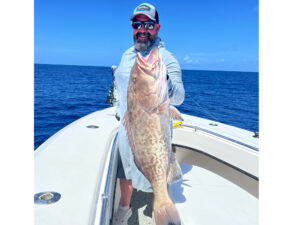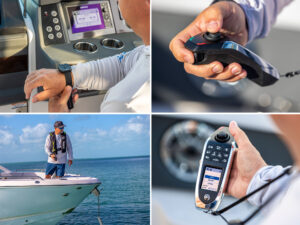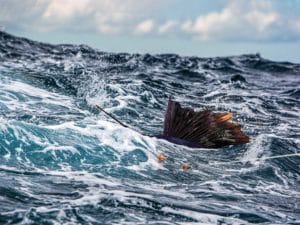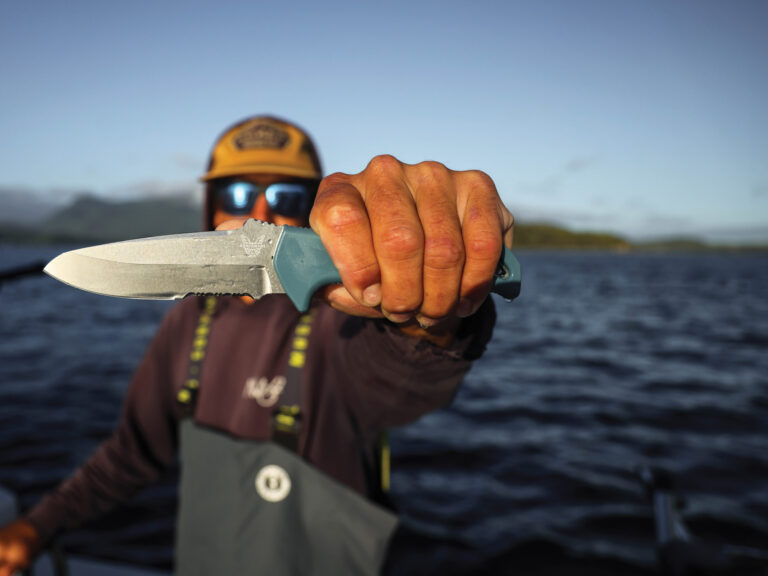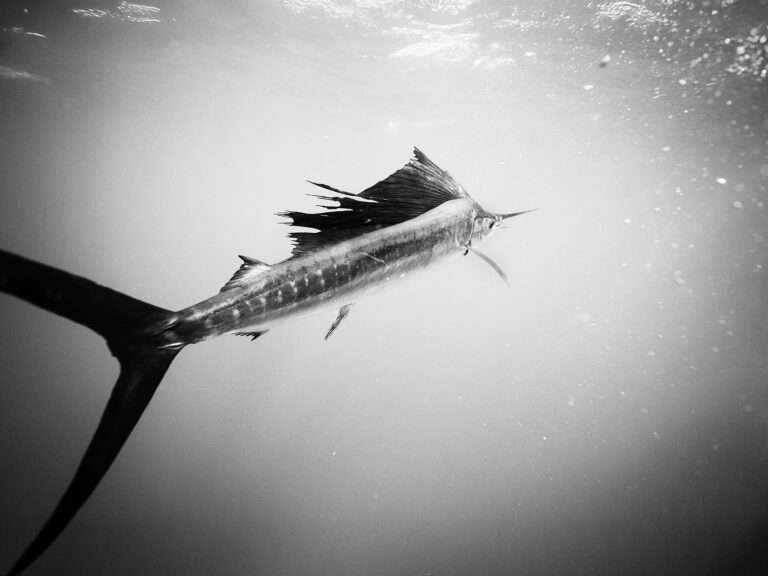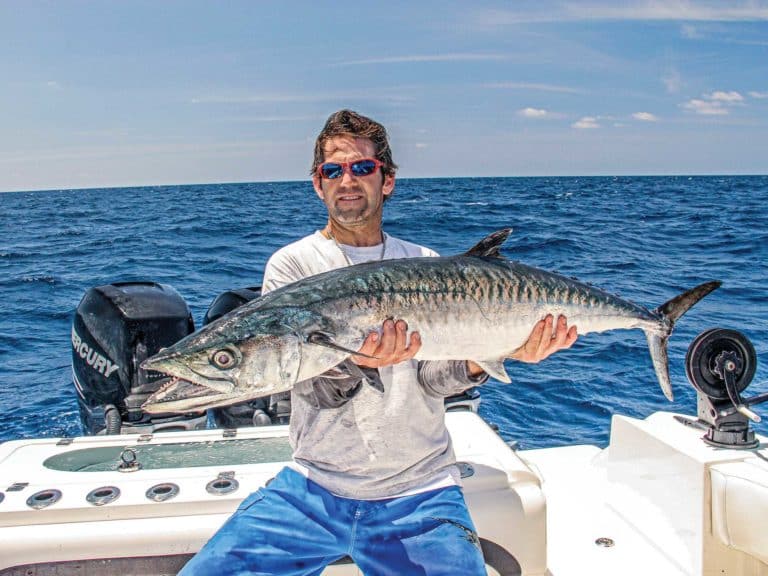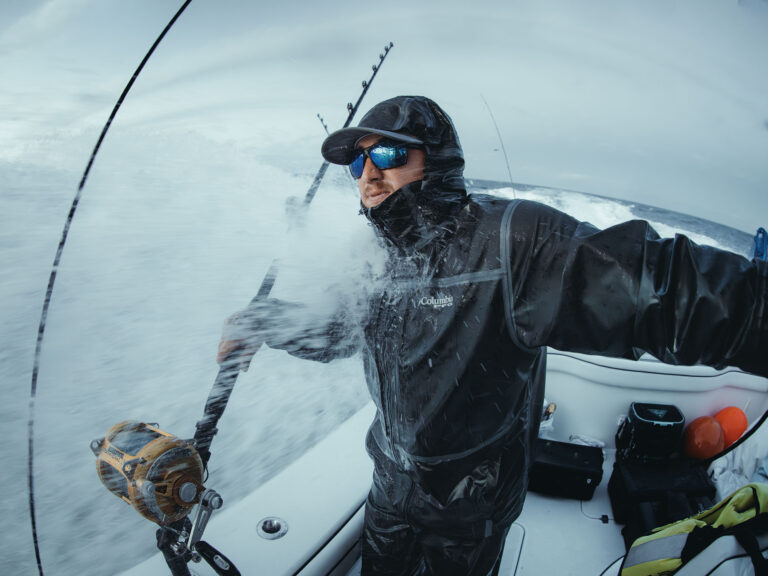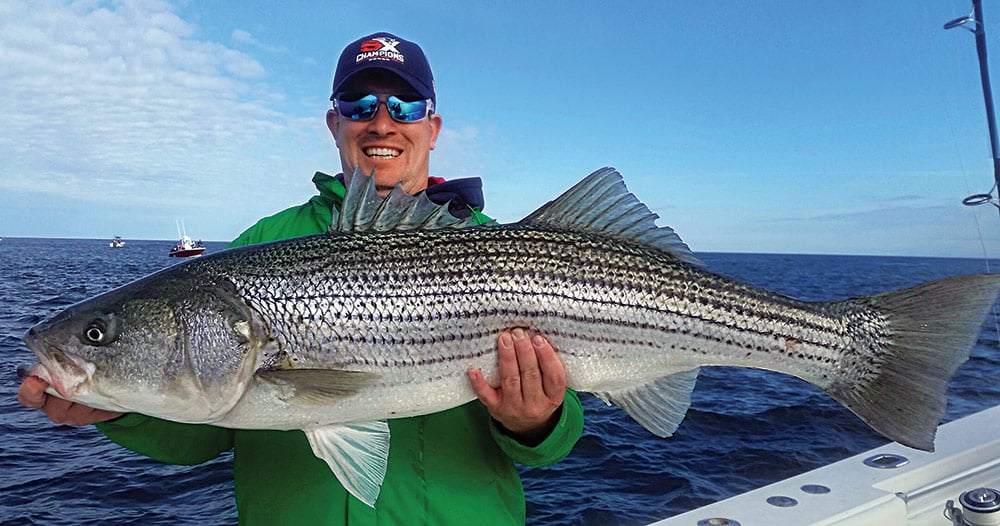
Striped bass (Morone saxatilis) are one of the most sought after gamefish in the United States. Silver and white with distinctive black stripes, they grow to impressive size, hit a variety of natural and artificial baits, and prove hard fighting adversaries. For some enthusiasts, striped bass fishing dons the mantle of a near-religious quest, especially when the annual spring and fall migrations sweep along the coast.
Stripers thrive in a range of habitats, from river mouths to open water, but generally are not far from structure and forage fish. Suitable tackle for striper fishing may be a simple bucktail on a light spinning rod, specialized heavy trolling setups, or anything in between.
Stripers can live to 30 years and typically take 6 to 8 years to reach maturity. Females grow larger than males, which rarely exceed 20 pounds, but have been recorded as large as 35. The largest striped bass recorded was netted off North Carolina in 1891 and reportedly weighed 126 pounds. The current IGF world record striper was caught by Greg Myerson in Branford, Connecticut in 2011, a 54-inch fish that weighed 81.88 pounds.
Anglers consider a 50-pounder the lifetime-accomplishment benchmark. Many spend an entire striper fishing career in pursuit of such a catch.
Tips on How to Catch Striped Bass
Stripers are found in nearly every type of coastal environment, but no matter where they are found, they’ll generally orient themselves around structure. Ledges, rocks, rip lines, inlets, depressions and any other features that might offer a location to lie in ambush. They also frequent sandy beaches and flats, where fly-fishing for stripers often gains local popularity.
During summer, when light is strongest, they hang in deeper water, moving shallow to feed at dawn or dusk and often feed heaviest at night. In fall and winter, when the sun is lower in the sky, or under cloudy skies, more feeding takes place throughout the day. Beach and jetty fishermen spend the majority of their time fishing for bass at night. Active all year round to some extent, their preferred temperature range is water between 55 to 65 degrees. Check out all of our tips on how to catch striped bass.
Striped Bass Fishing Gear
When pursuing striped bass, fishing rod selection becomes a matter of deciding where and how you will be fishing. For school bass, or on bay and inshore waters, a 7-foot light to medium rod, carrying 12- to 20-pound line will handle most casting and drifting chores, with both natural baits and lures. In open water, when fishing swimming plugs or larger live baits, opt for a heavier outfit, a medium to heavy rod rated for up to 30-pound line, capable of handling up to 3-ounce lures.
Choosing a spinning reel or casting reel is a matter of preference. Each has its advantages and particular strengths. Trolling for striped bass demands heavier conventional gear, and wire-line trolling, when searching deep, demands appropriate specialized tackle.
Best Rigs for Striped Bass
The simplest, though universally effective of an endless variety of striped bass rigs remains 4 to 8 feet of mono or fluorocarbon leader joined to the main line, and at the terminal end, tied to a lure, or a 3/O to 6/O circle hook, sized to match the bait. Most other rigs are variations on this type.
The Fish Finder Rig is essentially the same, with an egg sinker or sliding sinker on the leader, which allows the bait to reach the bottom, with the line free to pay out through the sinker when it’s picked up by a fish.
The 3-way rig incorporates a 3-way swivel a couple feet up the leader joining the leader and the main line, with a short length of mono ending in a sinker on the third attachment point. This allows for sinking a bait, which then rests in the current just above the bottom, anchored by the sinker. This rig is commonly employed with live baits or eels.
Best Lures and Baits for Striped Bass
Striped bass fall for a wide variety of both natural and artificial lures and baits, and an equally broad range of angling techniques. Striped bass baits range from dead clams and cut bait to lively menhaden, but a couple basic choices will carry you through the season.
In summer and fall live eels are deadly, fished at night around structure or in areas of turbulent water like inlets. Drift-fish with eels in shallow areas or add weight to get them deep. Fish them around structure from beach or boat with a slow retrieve.
In spring, herring gather around inlets and outfalls leading to their freshwater spawning streams and ponds. Fish live herring in these areas. Menhaden travel in large schools in estuaries and the ocean. Hooked them in the nose, back or tail and fish them near bait schools. Add weight to get them under the school when bass hold deep.
Artificial lures such as jigs are effective both when bass are feeding on a particular forage species, or when used to draw reaction strikes in promising looking holding water. Surface Poppers, minnow shaped swimmers, deep plugs, bucktails, diamond Jigs, and spoons are all proven winners. Diamond jigs with and without tube tails are ideal when sandeels are present. Jigging Spoons work when herring or menhaden are evident.
Bunker Spoons are deadly in the spring and fall when mature menhaden are schooling. Trolled exclusively on wire-line outfits, they catch and impressive number of big bass every year.
Where to Catch Striped Bass
Striped bass are structure-oriented fish and your depthfinder will help you find spots that consistently hold bass and others that rarely do. Use your chart plotter to save the waypoints and it will become your personal roadmap to better fishing. Also be on the lookout for baitfish on the surface, diving birds, bars along beachfronts and rips created by underwater structure. These are all positive signs when fishing for striped bass.
Stripers are anadromous, migrating up rivers to spawn in freshwater, but spend their adult lives in the salt. The largest contributor to the coastwide stock is Chesapeake Bay‘s feeder rivers followed by the Hudson River, Albemarle Sound and Delaware River.
Striped bass undertake two migrations each year, and striped bass season is often considered to be year-round. In the spring mature bass make their way up tidal rivers to spawn. They then return to saltwater and begin a migration that can take them as far north as Canada on the East Coast and Washington State on the West Coast. This migration takes them to cooler waters where forage is more abundant in the summer. They migrate south again in the fall to winter off Virginia and North Carolina where forage is plentiful.
Not all mature stripers travel the full distance. Some take up summer residence along the way. During the seasonal runs, most anglers intercept them along their coastal route between Maine and New Jersey and on to Virginia. A similar migration occurs on the west coast, in San Francisco Bay, where stripers enter from the ocean and run to the Sacramento and San Joaquin rivers.

